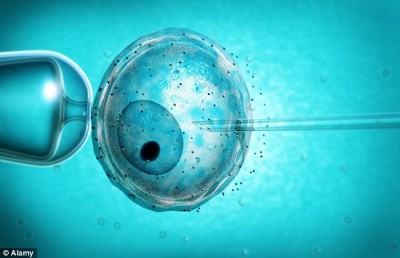Disclosure: This post may contain affiliate links, meaning we get a commission if you decide to make a purchase through our links, at no cost to you. Please read our disclosure for more info.
New advances in medical science have increased the average survival rate of cancer patients. Along with these great strides in the fight against cancer come other considerations, such as how to conceive a child post cancer treatment. Cancer patients are at great risk of infertility, as both radiation and chemotherapy are toxic to the ovaries and testicles. While these treatments don’t necessarily impair sexual function, they oftentimes damage the ovaries or lead to a decrease in sperm production. One new method that is being pioneered in order to combat infertility due to cancer treatments is fertility preservation.
Fertility preservation allows cancer patients to retain their ability to procreate via long-term freezing options. This is a relatively new practice, but one that is thriving. Whereas once fertility specialists were hard to come by, today clinics specializing in fertility preservation can be found in almost every metropolitan area. There are four viable fertility preservation options available for those interested.
Oocyte (Egg) Freezing –
Egg freezing is a fertility preservation option for those women who are suffering from the effects of cancer treatments or other forms of infertility, such as polycystic ovary syndrome. The procedure involves stimulating egg production in the patient’s ovarian follicles, harvesting between 10 and 12 eggs and storing them in liquid nitrogen until such time the patient is ready to conceive. With the first birth from egg-freezing occurring over a decade ago, the number of births throughout the world resulting from this method now number in the thousands. Not only that, but each baby born via a frozen egg has been healthy.
Sperm Banking –
This is a straightforward procedure that involves obtaining a sperm sample from a patient and freezing it in a sperm bank for future use. For those cancer patients who can’t produce sperm on their own, a process called testicular sperm extraction (TESE) is available. This biopsy technique is an outpatient procedure that involves removing tissue from the testes and freezing it. Then, at the request of the patient, the sample is thawed and viable sperm is retrieved from the tissue. While this is a common procedure for adult men, it is not viable for pre-adolescents who have yet to produce sperm. There are, however, studies underway that seek to harvest testicular stem cells from pre-adolescent boys that can be frozen for future use.
Ovarian Tissue Freezing –
The American Society of Reproductive Medicine considers ovarian tissue freezing an experimental procedure, which means it is not a common option in fertility clinics throughout the U.S. That being said, this relatively new technique is showing promise in helping female cancer patients maintain fertility. The process of ovarian tissue freezing involves removing a patient’s viable ovary, dissecting the tissue with microsurgery, freezing the tissue and then transplanting it back to the patient after she completes cancer treatment. The end result is the patient is able to have a healthy ovary that would have otherwise been destroyed by chemotherapy and/or radiation treatment.
Embryo Storage –
When embryos have been created — often through IVF (in-vitro fertilization) procedures – they can be frozen and stored for future use. These embryos can remain viable for extended periods of time, as it has been reported that births have occurred from embryos stored up to 16 years. While there is the very real risk not all embryos stored will survive the thawing process, all babies born from frozen embryos have been reported healthy.
With new advances in fertility preservation occurring every year, there are fewer reasons than ever for cancer survivors to let the ravaging effects of treatment prevent them from starting a family. Specialists in clinics throughout the country are available for consultations and can recommend effective preservation procedures geared towards maximizing fertility in both men and women.
Samantha Trent writes for Fertile-Future, a company dedicated to helping women with issues related to cancer fertility, egg storage, and fertility preservation.
[phpbay]fertility, 2[/phpbay]


